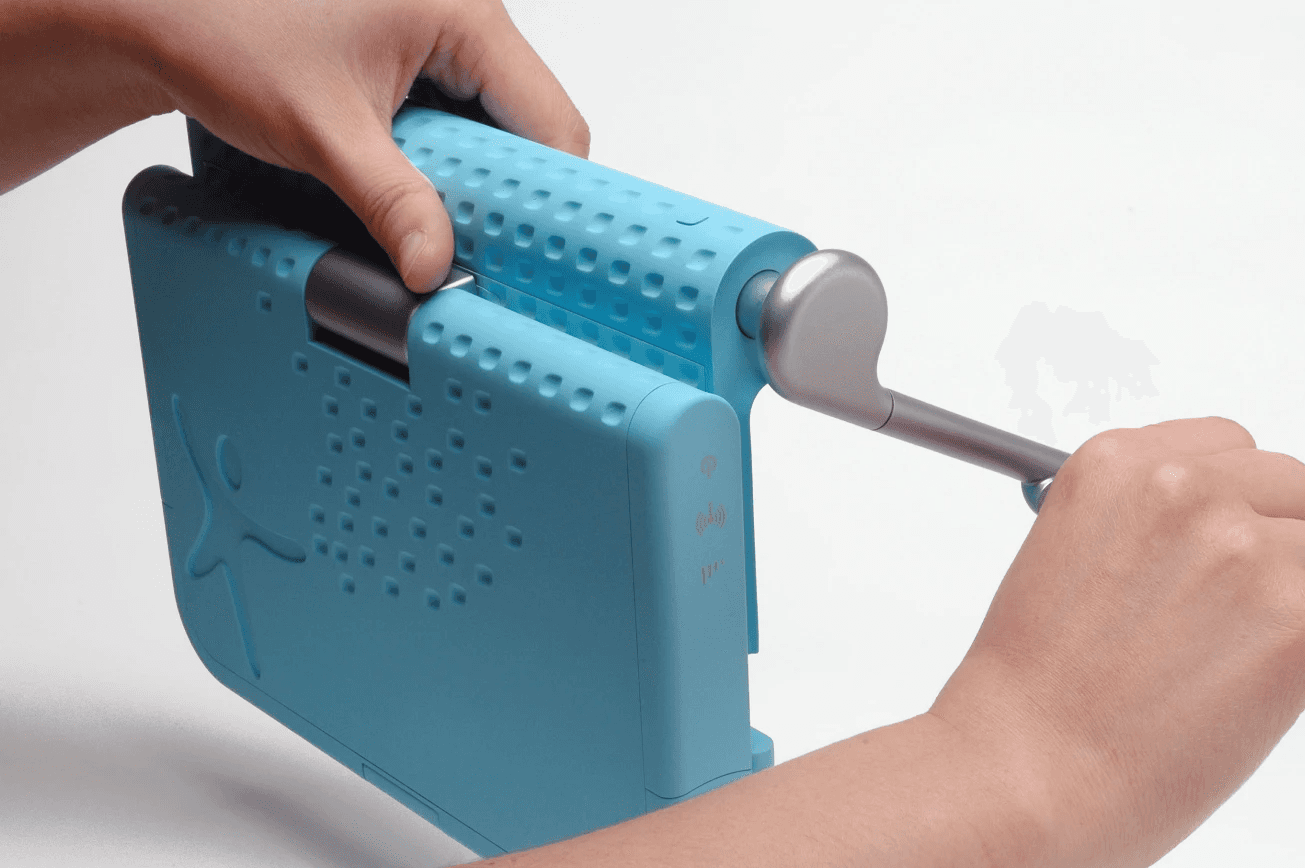OLPC
One Laptop Per Child
One Laptop Per Child
One Laptop Per Child



Not faster, bigger or more powerful, but cheaper.
Not faster, bigger or more powerful, but cheaper.
The One Laptop per Child (OLPC) initiative, known as the "100 Dollar Laptop," emerged as a non-profit endeavor under the MIT Media Lab's guidance. Its mission was to revolutionize global education by crafting and distributing specially designed laptops for children, complemented by tailored software and content. The resulting product, a precursor to netbooks, featured innovative elements such as a motherboard positioned behind the screen to minimize wiring through the hinge, adjustable WiFi antennas, a waterproof keyboard, a black & white, low-power reading mode, straightforward game controller buttons, and a stylus-compatible trackpad.
This unique-to-the-world laptop garnered collaboration from major manufacturers, symbolizing a passion-driven project with a profound opportunity to impact millions of children. Nicholas Negroponte, then head of the Media Lab, emphasized the need for unmistakable differentiation: "Our laptop is for kids only. It needs to clearly differentiate, so when an adult is seen with one, it's obvious the laptop is stolen."
___
2007
MIT Media Lab | Martin Schnitzer for fuseproject
Industrial Design
https://fuseproject.com/work/olpc-xo-laptop/
The One Laptop per Child (OLPC) initiative, known as the "100 Dollar Laptop," emerged as a non-profit endeavor under the MIT Media Lab's guidance. Its mission was to revolutionize global education by crafting and distributing specially designed laptops for children, complemented by tailored software and content. The resulting product, a precursor to netbooks, featured innovative elements such as a motherboard positioned behind the screen to minimize wiring through the hinge, adjustable WiFi antennas, a waterproof keyboard, a black & white, low-power reading mode, straightforward game controller buttons, and a stylus-compatible trackpad.
This unique-to-the-world laptop garnered collaboration from major manufacturers, symbolizing a passion-driven project with a profound opportunity to impact millions of children. Nicholas Negroponte, then head of the Media Lab, emphasized the need for unmistakable differentiation: "Our laptop is for kids only. It needs to clearly differentiate, so when an adult is seen with one, it's obvious the laptop is stolen."
___
2007
MIT Media Lab | Martin Schnitzer for fuseproject
Industrial Design
https://fuseproject.com/work/olpc-xo-laptop/
The One Laptop per Child (OLPC) initiative, known as the "100 Dollar Laptop," emerged as a non-profit endeavor under the MIT Media Lab's guidance. Its mission was to revolutionize global education by crafting and distributing specially designed laptops for children, complemented by tailored software and content. The resulting product, a precursor to netbooks, featured innovative elements such as a motherboard positioned behind the screen to minimize wiring through the hinge, adjustable WiFi antennas, a waterproof keyboard, a black & white, low-power reading mode, straightforward game controller buttons, and a stylus-compatible trackpad.
This unique-to-the-world laptop garnered collaboration from major manufacturers, symbolizing a passion-driven project with a profound opportunity to impact millions of children. Nicholas Negroponte, then head of the Media Lab, emphasized the need for unmistakable differentiation: "Our laptop is for kids only. It needs to clearly differentiate, so when an adult is seen with one, it's obvious the laptop is stolen."
___
2007
MIT Media Lab | Martin Schnitzer for fuseproject
Industrial Design
https://fuseproject.com/work/olpc-xo-laptop/


















Let's create fewer, but better.
